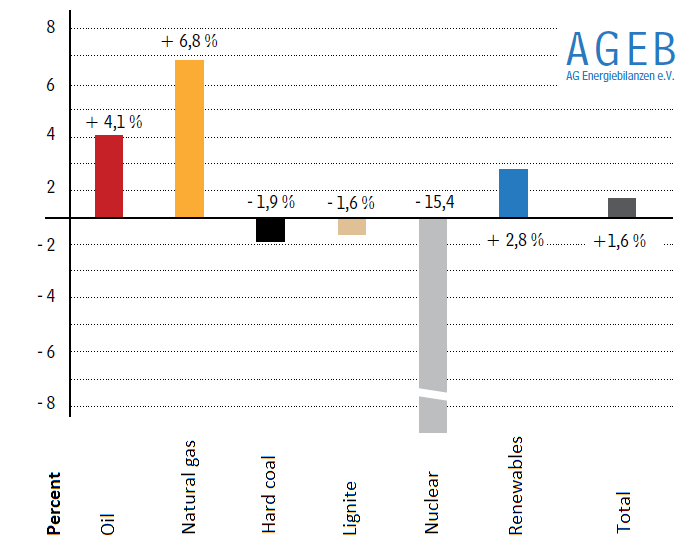Germany‘s primary energy consumption rose by 1.6 % to 6821 Petajoule or 1895 TWh during the first six months of 2016.

Reasons for the increase are the growing economy, cooler weather in the beginning of the year and the rising population numbers. Efficiency improvements were able to offset some part of the rising energy consumption (Source: Montel).
In the first six month of the year the consumption of natural gas was 7 % higher than last year due to more electricity generation in gas-fired power plants and the cooler winter. In total 445 TWh of gas were used. The share of renewable energies rose by 2.8 % und consequently rose to 13% of the total energy consumption or 246.31 TWh. Figure 1 depicts the structure of the German primary energy consumption in the first half-year of 2016.

Figure 1: Structure of the primary energy consumption of Germany in the first half-year of 2016 (total: 6821 PJ). Source: AG Energiebilanzen e.V.
The consumption of hard coal roughly decreased by 2 % to about 234.95 TWh, as the existing power plants are pushed out of the market due to renewables. Similarly, the lignite consumption also declined compared to the same period of last years by 1.6 % to 206.52 TWh. The biggest slump however could be observed for nuclear power with about 15 % to 123.17 TWh. The percentage changes of the different energy carriers in the first six months of this year are shown in figure 2.

Figure 2: Development of the primary energy consumption during the first half-year by energy carrier in percent (source: AG Energiebilanzen e.V.)



